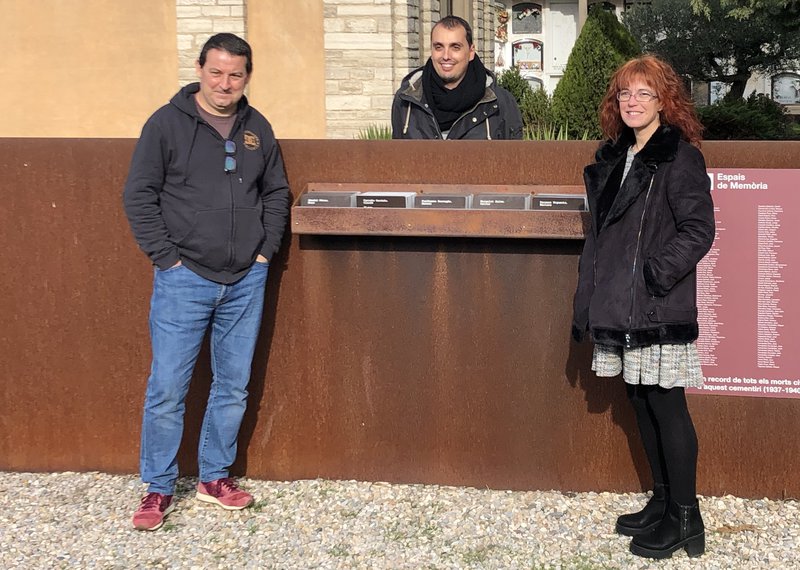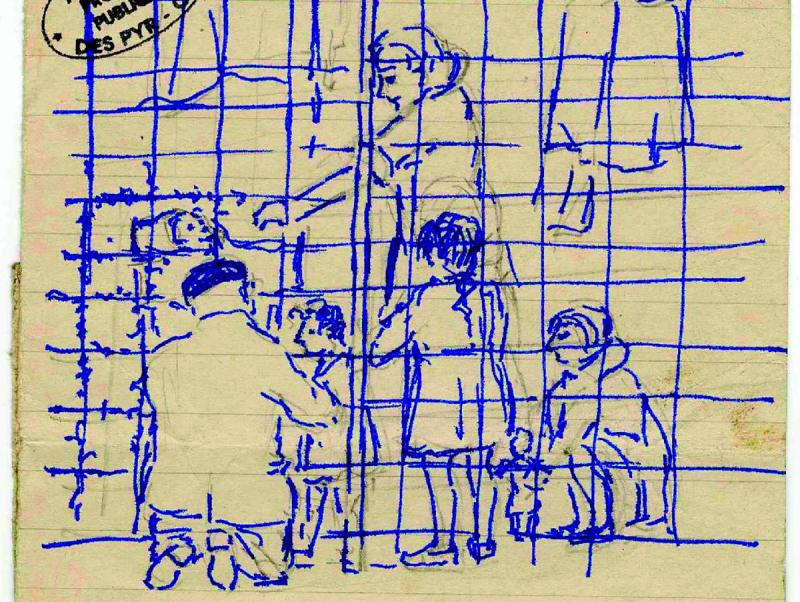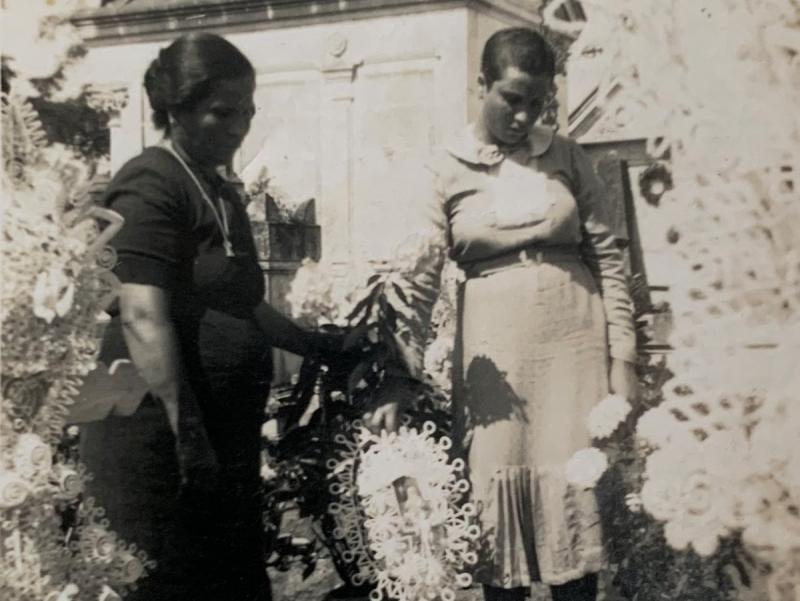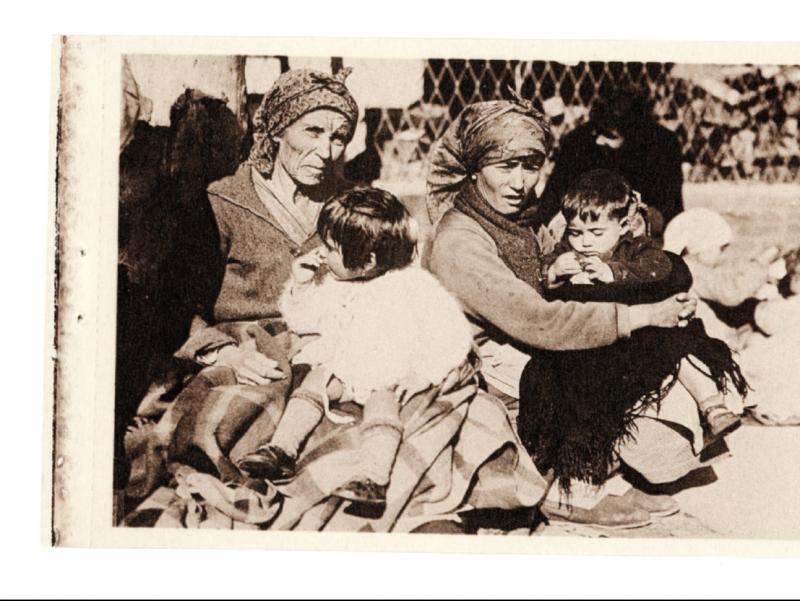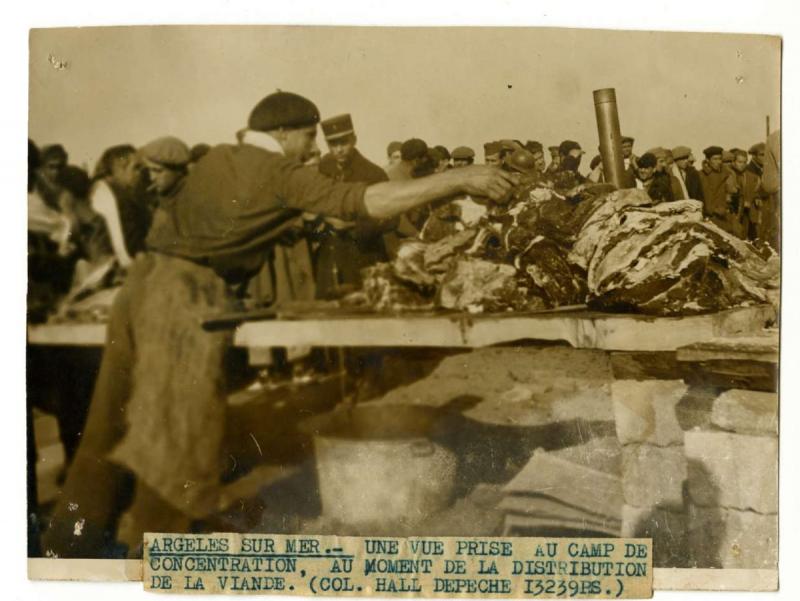Features
Jordi Oliva - Martí Micas - Noemí Riudor
HISTORIANS
“Little research has been done on death in the French camps”
In this interview, the Catalan historians responsible for compiling a list of 1,685 people who died in French internment camps between 1939 and 1940 provide some insight into their findings
more than a third of those in exile were from Catalonia mortality was especially high AMONG new-borns and babiES
Did we not have any approximate numbers for the people who died in the French camps until now?
Very little research has been done on death in the French camps and what has been done is only a partial job with both local primary and secondary sources, at least as far as we know. There is talk, for example, of more than 160 deaths in Argelès due to ill-treated illnesses and wounds; it is also thought that 10 people died in the Bram camp the day after arriving; between February 26 and March 4, 20 more people died at the Hospital de Sant Lluís in Perpignan, etc. In general, as is also the case in our country, death registers don’t cover all deaths in camps or hospitals. We don’t know whether this was to do with the status of the refugee, their being abandoned by the authorities at home, the local authorities being overwhelmed or neglectful, or the indifference of third-party countries. In recent years, a little more progress has been made, but the result of research on the study of mortality in the camps remains insufficient. We hope that this contribution will help shed a little more light on our knowledge of exile and the overall human cost of it.
Does the total figure come close enough to the deaths that actually occurred in the French camps or do you have the impression that there were more?
In global figures, in the whole geographical and temporal scope of exile, there were more of course. Focusing just on the period we have studied, however, from January 1939 to January 1940, and geographically in the camps of what are today the departments of Languedoc-Roussillon and Midi-Pyrénées, we believe that the number of fatalities is very accurate. The fact that the age group between 0 and 4 years represents about 9% reflects a more than evident reality, that there was a very high infant mortality, but the fact that this appears on the list shows a clear desire to produce an exhaustive count. Little Hortènsia Cortina Vidal’s appearance on the list made us realise this. On the other hand, we’re aware that we don’t have all of them, and we noticed this because of the absence of Roser Guàrdia Gabarrós.
Based on this list, what mortality might we be talking about in the French internment camps?
If we accept the figures given by the French Ministry of Foreign Affairs, the Valière Report and the historiography on exile as correct, and especially those provided by Javier Rubio, the total number of exiles in the first months of 1939 would be about 440,000, including civilians (women, elderly and children), the disabled and wounded (without specifying whether civilians or military), and able-bodied civilians and military. Of these, around 300,000 would have been repatriated between February and December 1939. Applying the calculation to the total number that would have gone into exile, it could be around 4 per 1,000. If we apply this to those who stayed in France after repatriations, this figure would rise to 12 per 1,000.
The list gives us a very raw picture of the suffering experienced in the French internment camps. What conclusions can we draw from this?
A lack of foresight, the tightening of legal and administrative measures by the French state, improvised spaces, insecurity and uncertainties of all kinds, from the recognition of temporary asylum instead of political refugee status to the Francoist authorities’ unscrupulous use of the refugees in their talks with the French state, the restrictions on refugees’ access to the labour market, difficulties in family reunification, makeshift camps built by the inmates themselves as they were arriving and without any initial sanitary infrastructure, forced repatriations, non-existent hygiene, diseases due to food deficiencies and non-potable brackish water.
The municipality of birth or residence is sometimes specified, and people came from all over Spain. How many Catalans were there?
The sources, and especially the one from Javier Rubio, show that more than a third of those in exile were from Catalonia. In relative figures, it would be 36.5% of the total. This is followed by Aragon (18%), Valencia (14.1%), Andalusia (10.5%) and the rest of the Peninsula (20.9 %). The Catalan contingent is therefore indisputably the largest by far. It should also be borne in mind that a very large part of the non-Catalan refugees who passed to the other side of the Pyrenees came from a first refuge, often travelling through various towns in Catalonia, as evacuees from war zones at the beginning of the Civil War. Of the total number of victims on the list, we know the origin and/or residence in 35% of cases. At such a low percentage it’s difficult to draw conclusions, because perhaps we have a biased view, but if we look at solely the information of origin, and taking into account the few cases for which we have this information, we see that most are Catalan, with Barcelona and Tarragona being prominent among these. By county, we see that, Barcelonès is obviously the one with the highest presence and behind that the Ribera d’Ebre. In fact, Ebre has quite a high presence. If we take into account the counties of Terres de l’Ebre (Baix Ebre, Montsià, Terra Alta and Ribera d’Ebre), there are more total victims than Barcelonès. This is the case with one of the two oldest victims, Francisco Galindo Sendra, 86 years old and a resident of Ginestar (Ribera d’Ebre).
If we look at the ages, which range from just a few days old to 50, we deduce that there were whole families there. The number of youngsters is very shocking.
During the first days of exile, mortality tended to be very high. The difficulties of the journey, exhaustion, the lack of food, the cold... all were circumstances that obviously affected everyone, but to a greater extent the more vulnerable. In the case of those who had fought, there were also poorly-healed wounds that were not treated in time. As for infants, mortality was especially high in the case of new-borns and babies. It is especially significant that we counted 64 deaths of babies under the age of 1, which represents 5.5% of the total number of victims whose age we know. If we broaden our focus and look at the 0-4 age group, the percentage climbs to around 9%. It’s worth noting that the age group with the highest mortality was in the range of 20 to 24 years old, which represents 16% of the total. This would be the segment of younger and inexperienced fighters. Lastly, we should also mention that we also identified a large segment of people aged between 60 and 86 (some 85 people), who, as grandparents, complete the family group profile.
feature historical memory
Related news
Leave a comment
Sign in.
Sign in if you are already a verified reader.
I want to become verified reader.
To leave comments on the website you must be a verified reader.
Note: To leave comments on the website you must be a verified reader and accept the conditions of use.

